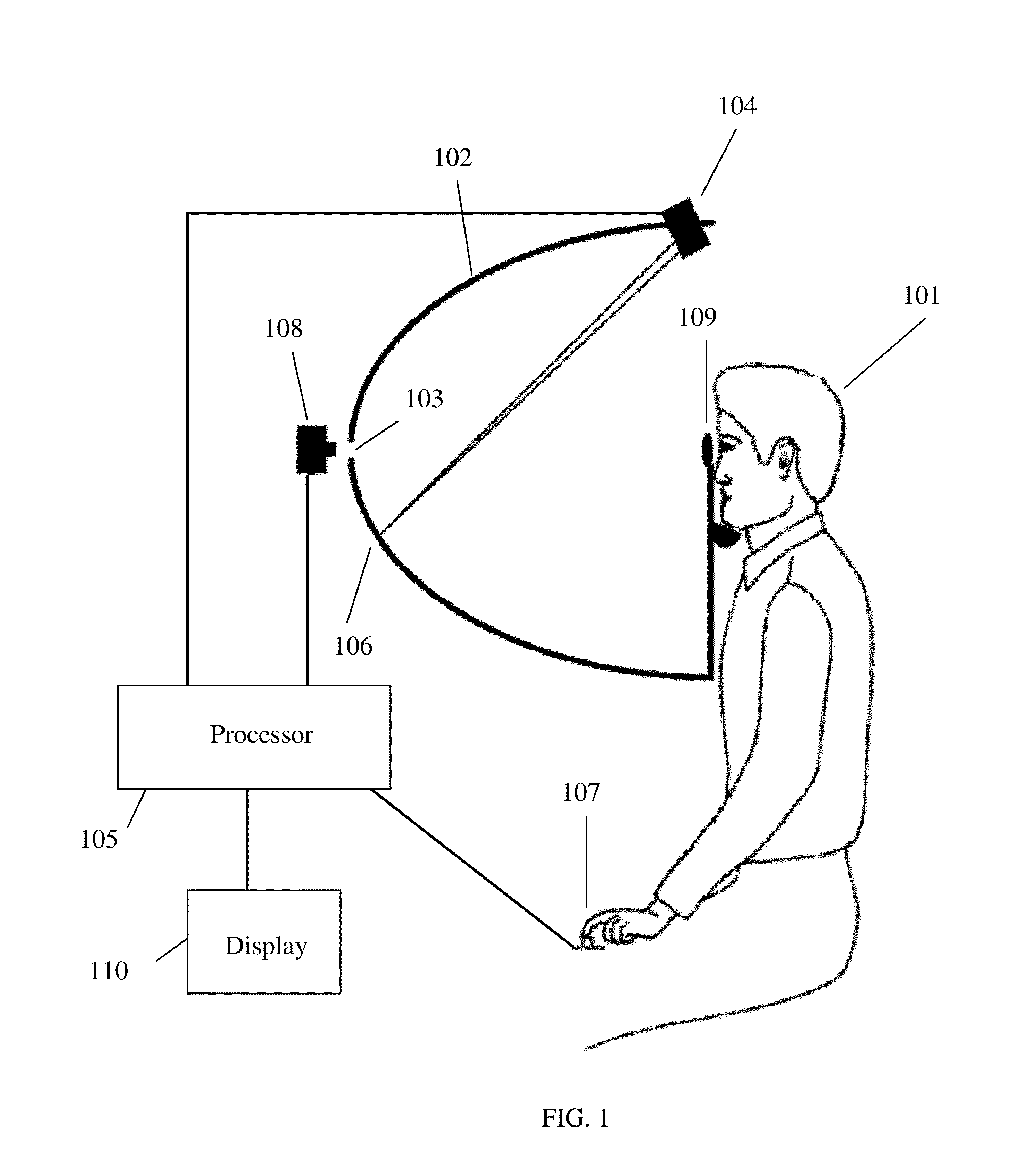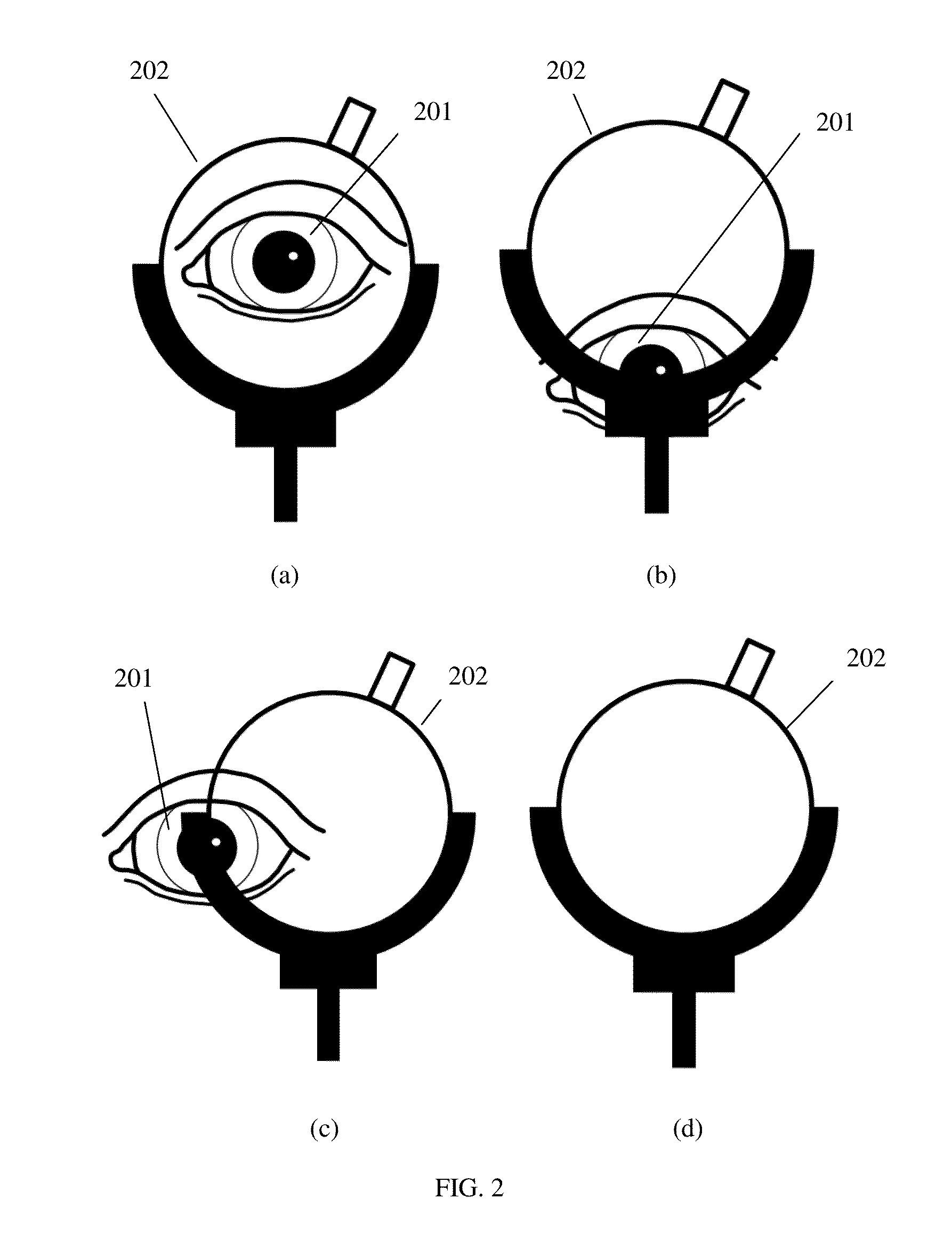Systems and methods for improved visual field testing
a visual field and test system technology, applied in the field of visual field testing, can solve the problems of confounding visual field test, incomplete or partial closure of eyelids during stimulus presentation, interference with visual field measurement, etc., and achieve the effect of greater confidence in results
- Summary
- Abstract
- Description
- Claims
- Application Information
AI Technical Summary
Benefits of technology
Problems solved by technology
Method used
Image
Examples
Embodiment Construction
[0012]The invention described herein could be used in conjunction with any type of visual field tester. One such system is illustrated in FIG. 1. A patient 101 is shown observing a hemispherical projection screen 102. The patient is instructed to fixate at a point at the center of the hemispherical screen 103. A projector 104 under control of a processor 105 projects a series of spots 106 onto the screen. The patient indicates that the spot 106 of light was seen by depressing button 107. The response is recorded by the processor 105. A camera 108 can be used to monitor the gaze of the patient throughout the test. The images from the gaze camera can optionally be displayed (on display 110) to the clinician for aid in patient alignment or test verification. A trial lens holder 109 is positioned in front of the eye of the patient being tested to correct the refractive error of the patient. While FIG. 1 shows a projection type visual field tester, the subject invention can be used with ...
PUM
 Login to View More
Login to View More Abstract
Description
Claims
Application Information
 Login to View More
Login to View More - R&D
- Intellectual Property
- Life Sciences
- Materials
- Tech Scout
- Unparalleled Data Quality
- Higher Quality Content
- 60% Fewer Hallucinations
Browse by: Latest US Patents, China's latest patents, Technical Efficacy Thesaurus, Application Domain, Technology Topic, Popular Technical Reports.
© 2025 PatSnap. All rights reserved.Legal|Privacy policy|Modern Slavery Act Transparency Statement|Sitemap|About US| Contact US: help@patsnap.com



